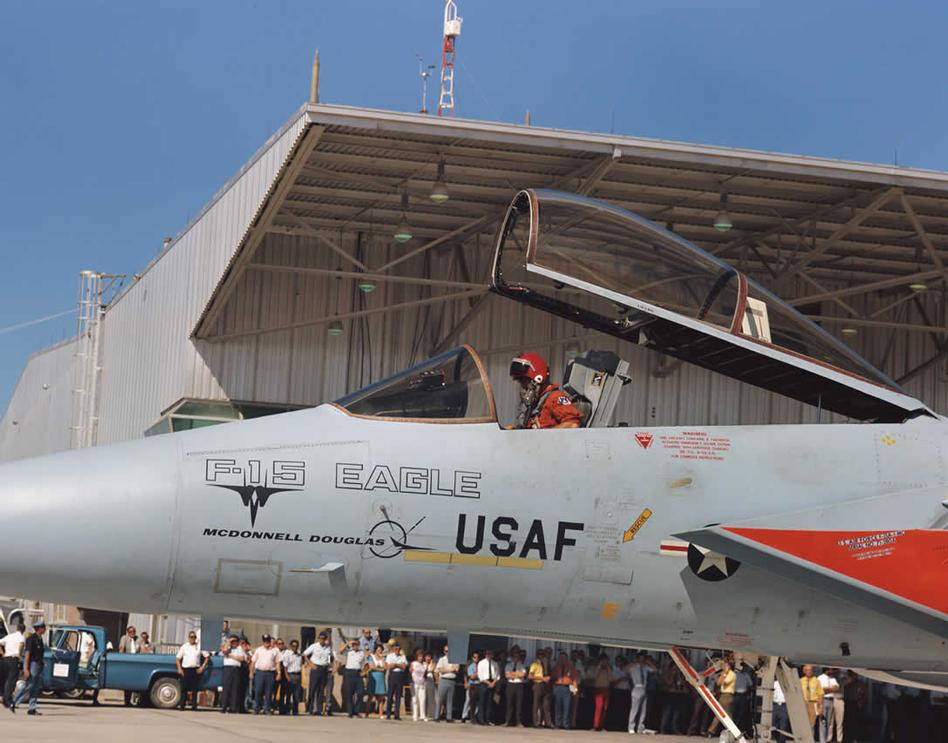
27 July 1972: McDonnell Douglas Chief Experimental Test Pilot Irving L. Burrows made the first flight of the prototype YF-15A-1-MC Eagle, 71-0280, at Edwards Air Force Base, California.
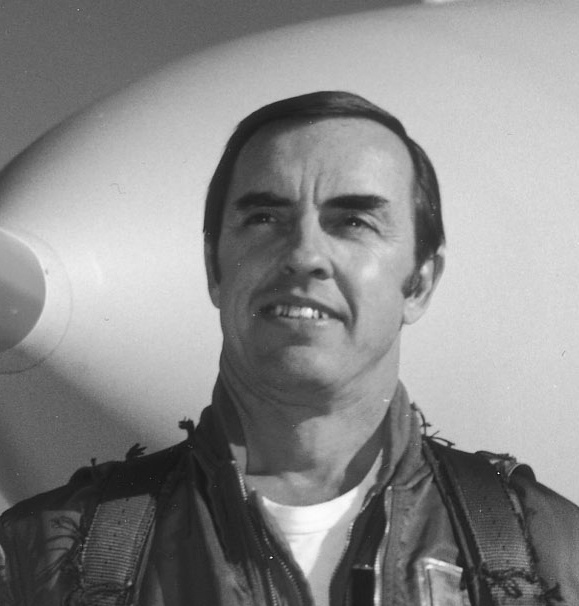
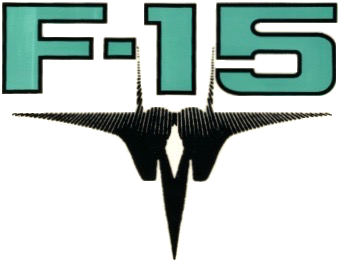 The F-15A Eagle is a single-seat, twin-engine air superiority fighter, built by the McDonnell Douglas Corporation at St. Louis, Missouri. The fighter has outstanding acceleration and maneuverability. It is 63 feet, 9 inches (19.431 meters) long, with a wingspan of 42 feet, 9.75 inches (13.049 meters) and overall height of 18 feet, 7.5 inches (5.677 meters).
The F-15A Eagle is a single-seat, twin-engine air superiority fighter, built by the McDonnell Douglas Corporation at St. Louis, Missouri. The fighter has outstanding acceleration and maneuverability. It is 63 feet, 9 inches (19.431 meters) long, with a wingspan of 42 feet, 9.75 inches (13.049 meters) and overall height of 18 feet, 7.5 inches (5.677 meters).
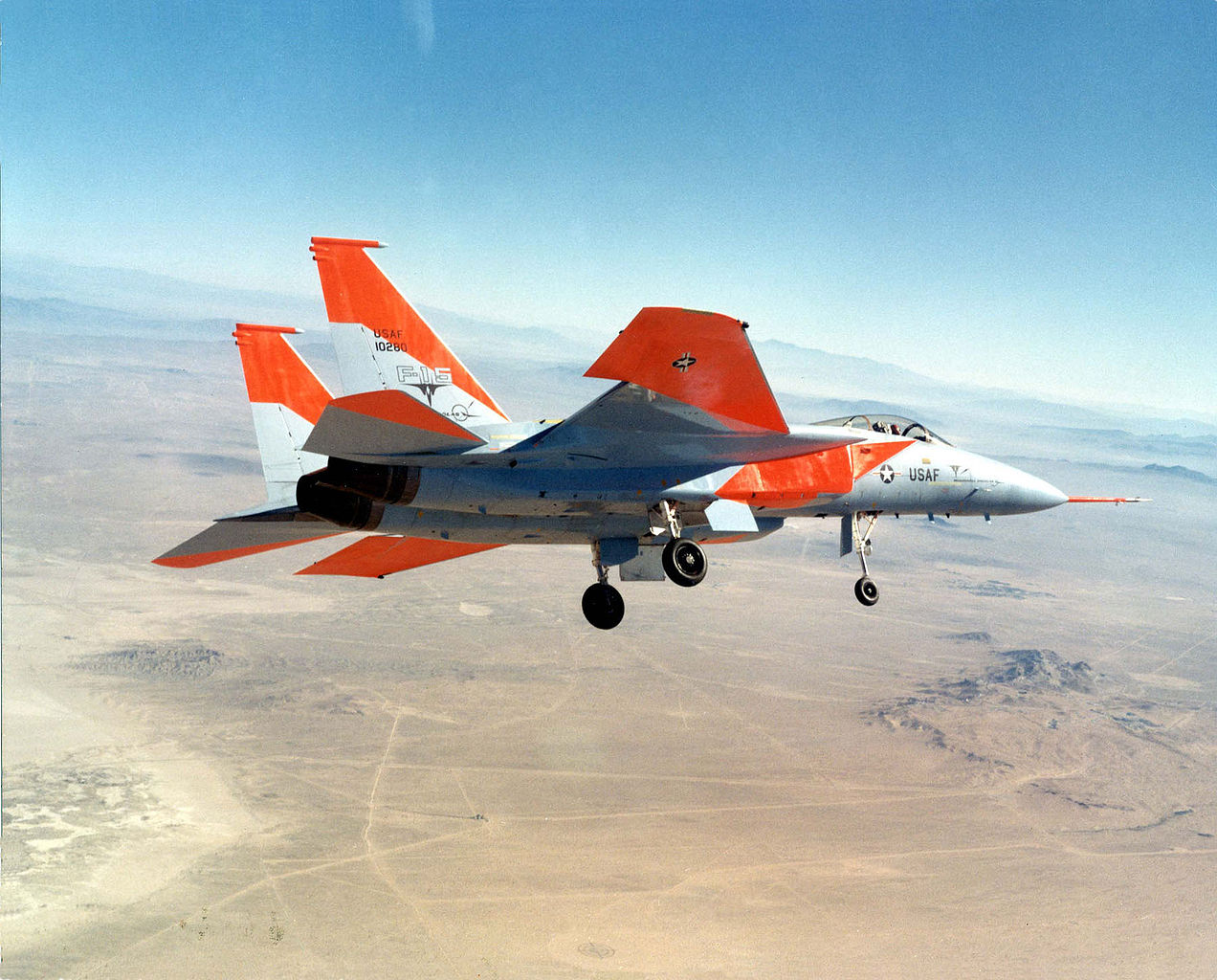
The wings’ leading edges are swept to 45°. The angle of incidence is 0°. The wings have 1° anhedral. The total wing area is 608 square feet (56.5 square meters).
The F-15A has an empty weight of 25,780 pounds (11,694 kilograms), and maximum takeoff weight of 44,497 pounds (20,184 kilograms).
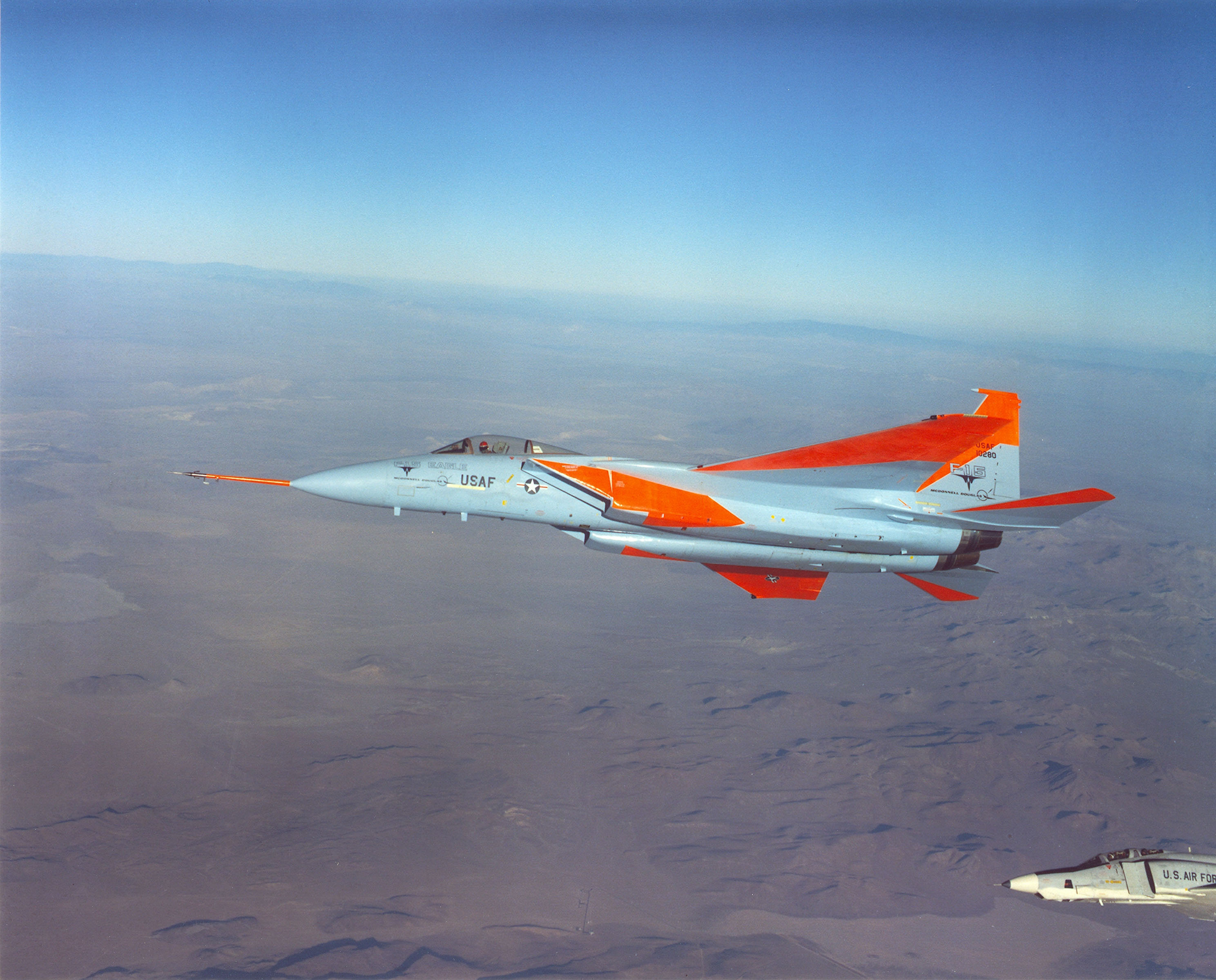
The fighter was powered by two Pratt & Whitney JTF22A-25A (F100-PW-100) turbofan engines. The F100 is a two-spool, axial-flow afterburning turbine engine with a 3-stage fan section; 10-stage compressor; single chamber combustion section; and 4-stage turbine (2 low- and 2 high-pressure stages). The F100-PW-100 has a maximum continuous power rating of 12,410 pounds of thrust (55.20 kilonewtons) and intermediate rating of 14,690 pounds (65.34 kilonewtons), (30 minute limit). Its maximum power rating is 23,840 pounds (106.05 kilonewtons) with afterburner (5 minute limit). The F100-PW-100 is 16 feet, 4.3 inches (4.986 meters) long, 3 feet, 10.5 inches (1.181 meters) in diameter, and weighs 3,179 pounds (1,442 kilograms).
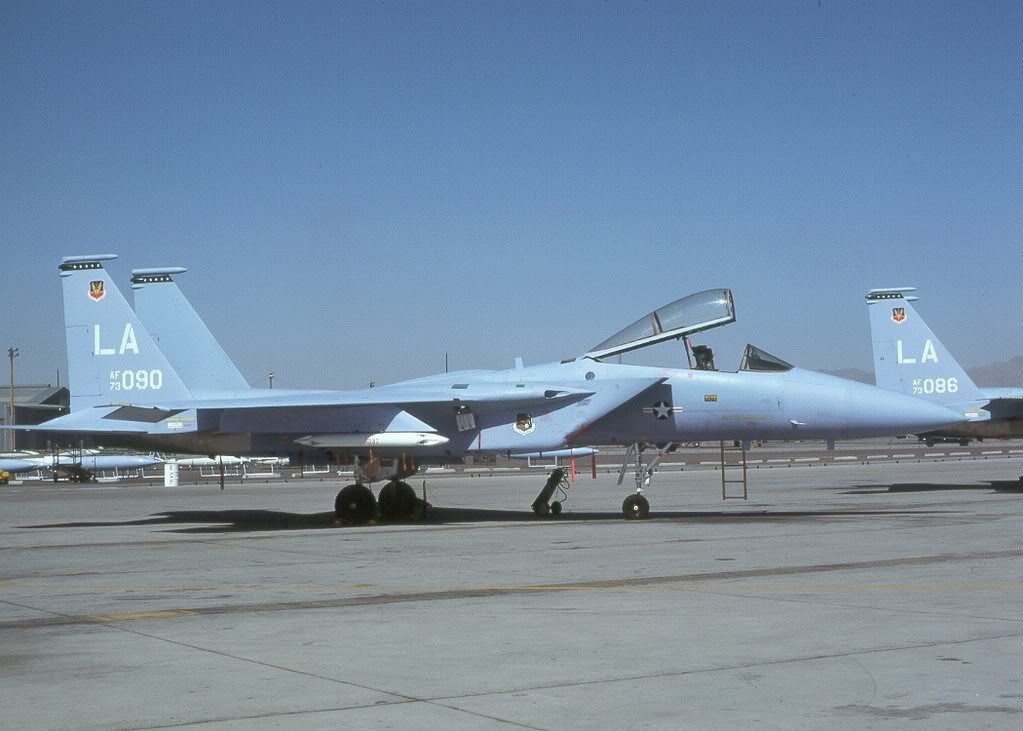
The Eagle is a Mach 2.5+ fighter. The cruise speed of the F-15A Eagle is 502 knots (578 miles per hour/930 kilometers per hour). It has a maximum speed of 1,434 knots (1,650 miles per hour/2,656 kilometers per hour) at 45,000 feet (13,716 meters)—Mach 2.503. The service ceiling is 63,050 feet (19,218 meters). It can climb 67,250 feet per minute (342 meters per second), and with a thrust-to-weight ratio of 1.15:1, the fighter could climb straight up.
The The F-15A’s combat radius is 638 nautical miles (734 statute miles/1,182 kilometers). Its maximum ferry range is 2,362 nautical miles (2,718 statute miles/4,374 kilometers).
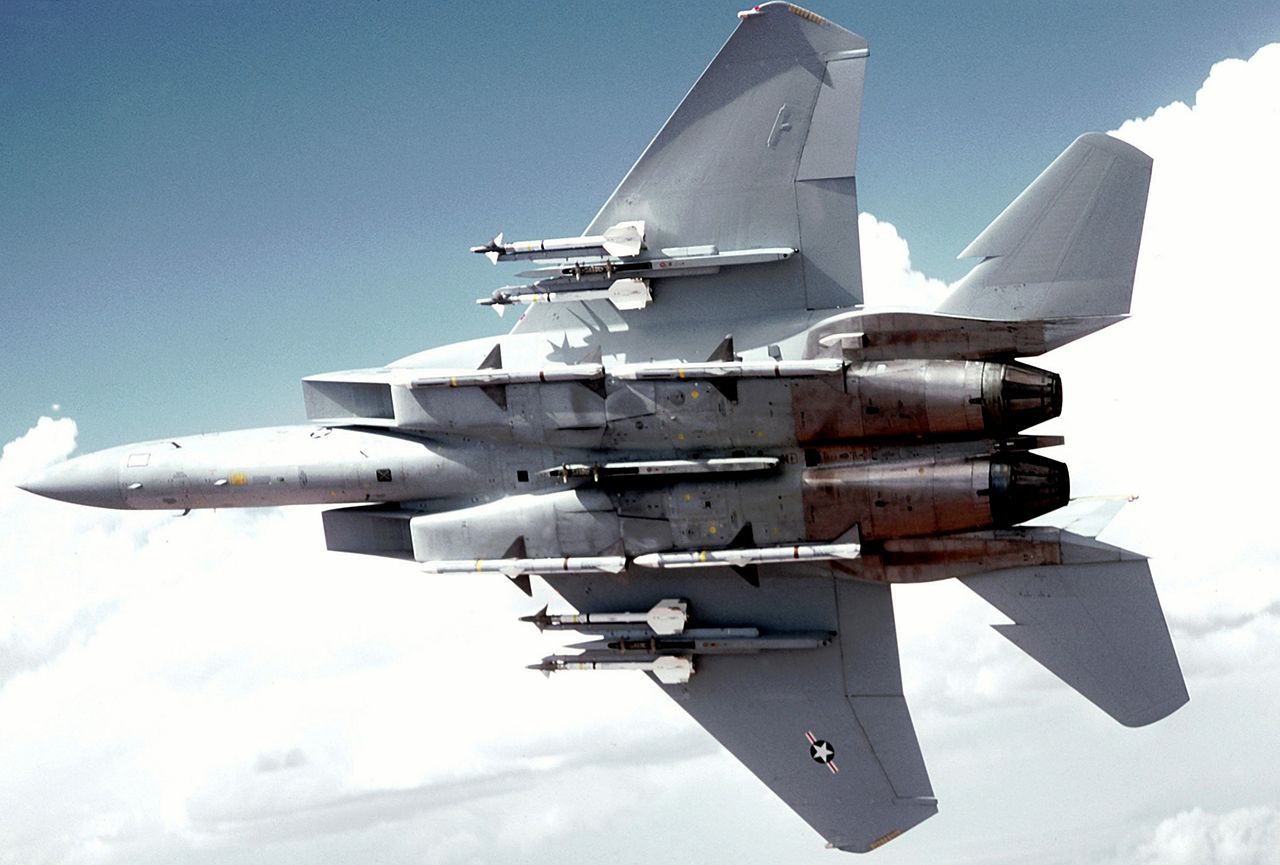
The F-15A is armed with one General Electric M61A1 Vulcan 20mm rotary cannon with 938 rounds of ammunition, four AIM-7F Sparrow radar-guided missiles and four AIM-9E/L Sidewinder infrared-homing missiles. The fighter could also carry a variety of bombs.
There were 12 pre-production F-15 aircraft, serial numbers 71-0280–71-0291. 384 F-15A fighters were built from 1972 to 1979, before production switched to the improved F-15C. The last F-15A Eagle in U.S. Air Force service, F-15A-19-MC 77-0098, was retired from the Oregon Air National Guard, 16 September 2009.
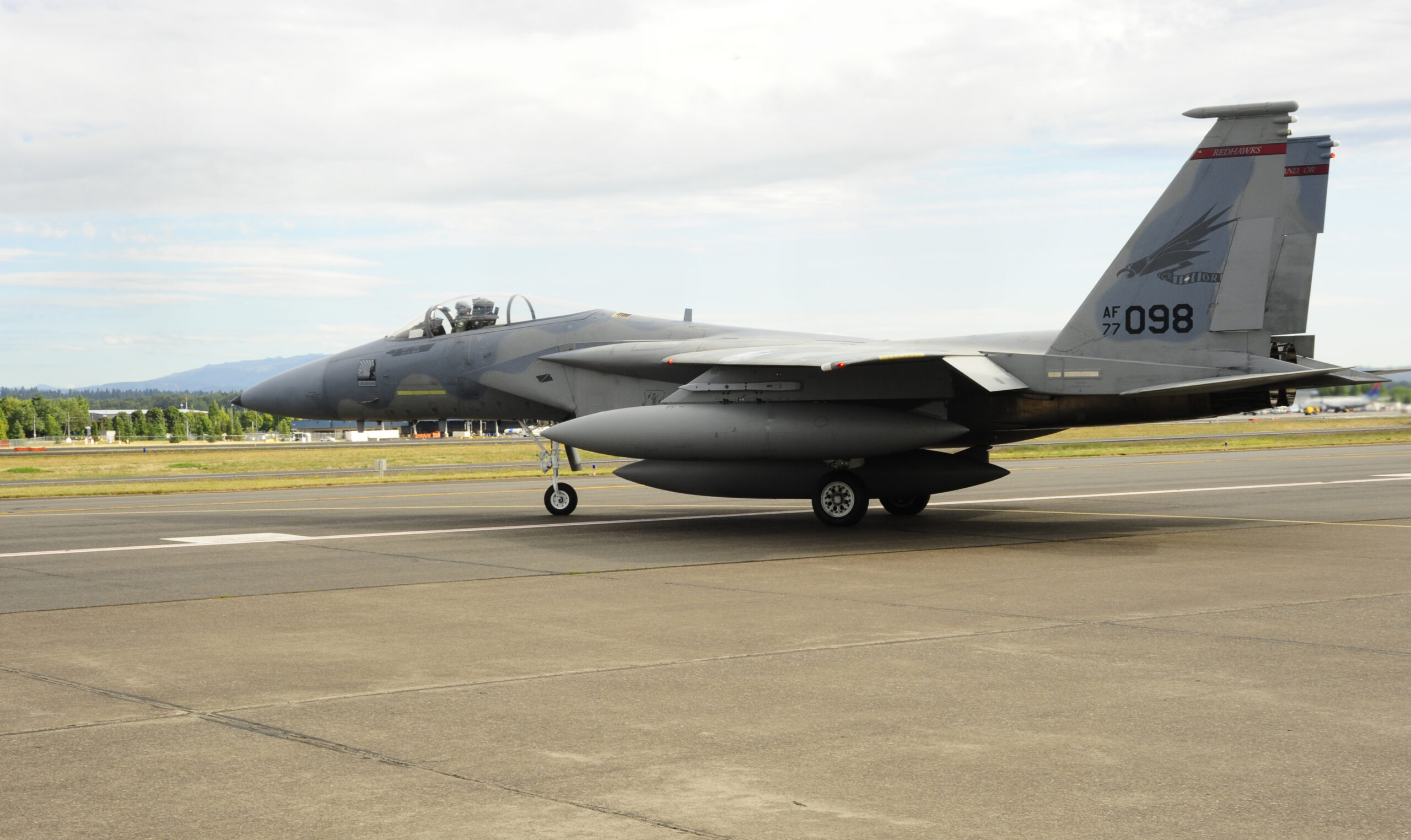
The first YF-15A, 71-0280, is on display at Lackland Air Force Base, Texas.
© 2018, Bryan R. Swopes
I cant tell enough how much I enjoy this website. It is definitely among the best. Kudos for all the effort, the investigative process and for sharing.
Regards,
Juan Campos
767 Captain
Oh, my gosh, thank YOU. 🙂
When asked what my son, age 10 at the time wanted for Christmas, he said all he wanted was a toy F15/C model because he said when he grows up he wanted to be a F15/C pilot. By the way he was born in 1972. He grew up and did become an Eagle Drive in the USAF.
Love your article on the Eagle.
Wonderful!
Hello Bryan,
The story never gets old. I have > 34 years on the Venerable, hands-on and or in support roles at all three maintenance levels and on every variant. I cannot WAIT for the Eagle-X and am going to attempt to jump aboard the program in some way. Thank you for your article on the best day in military aviation history..!
~ Rick ~
Thank you, Richard.
Thanks for posting! Had the pleasure of flying the Mighty Mighty for almost 10 years, starting in 1977. Also got to meet Mr Burrows when he gave me the first 2000 Hour patch at Holloman AFB. Good times, indeed !!
The guy in the cockpit with the red helmet is my dad. I was 15 years old and got to watch the first flight from the RSU truck. The F-15 test program was the culmination of a lot of hard work from some extremely intelligent and talented people whose only focus was to build the best fighter jet ever. I think the Eagle’s record and longevity certainly speak to their success in doing just that.
Thank you, Jeff. I have been writing TDiA for over seven years and absolutely the best thing is when I hear from someone with a personal involvement—”That’s my Dad!” You just made my day. ‚Bryan
Love the Eagle, Eagle Keeper at Holloman AFB and King Salmon AFS 1986-1990. Super Aircraft to work on…
I was working the Phantom D model in 1972 in SEA. Never even heard of the F-15. The Phantom always has been my favorite jet. I went to C5s in 1974. Then F111F in 1980. Finished up my career back on the Phantom E model at Seymour Johnson. Just before I retired in 1989, the 4th FW started getting the F15E Strike Eagle. I hear them and see them every day. Impressive jet. By the way, the F111F is my second favorite jet.
Howdy Jeff. Would love to have conversation sometime.
73-090 and -086 as pictured at Luke AFB, AZ were part of my care as a 326X6 Avionix Tech back in 1980-82. Nine major LRUs for the AN/APG-63 X-Band Multi-mode Multi-PRF MonoPulse Radar with 1 major phase-array 3way-gimbaled hydraulic powered antenna and multiple minor antennae; later upgraded to AN/APG-70. The mechanical gyroscopic 4-gimbal Inertial Measurement Unit was also later upgraded to a Ring-Laser IMU. I had the opportunity to fly in the backseat of the F-15D twice; once in SKorea on a training mission as the last ship of 16 defenders against 24 inbound unfriendlies; the second was a Re-Enlistment Ceremony accomplished in its entirety at Mach 1.2 above Okinawa Japan. Thanks for the blast from the past, Bryan!
When you name something “Eagle” you gotta get it right. They did!
Good article. Disturbingly though, 71-0280, the first F-15A may be on display at Lackland AFB but not as 71-0280. It’s got an Eglin tail flash and 85-0114 (significance?) painted on it. Unless this has changed of course since the shot I have on file was taken. This practice should not be allowed, for obvious reasons. As if its origin was not worthy….
85-0114 is a McDonnell Douglas F-15C-40-MC Eagle. It destroyed an Iraqi Mikoyan-Gurevich MiG 29 “Fulcrum,” 19 January 1991. The pilot was Captain Cesar Rodriguez, USAF. Rodriguez outmaneuvered the Iraqi pilot, Captain Jameel Sayhood, forcing him into the ground. On 26 January, Rodriguez and -0114 shot down a MiG-23 “Flogger.” -0114 last known assignment 44th FS, 18th FW, Kadena Air Base, Okinawa. It carries two green star “kill marks” on its nose.